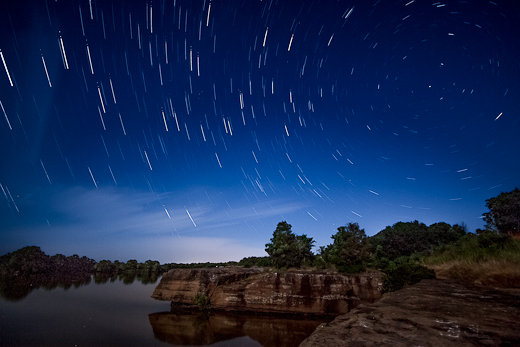This is a photo that was made during my Digital Night Photography Workshop on June 2, 2012.
Capturing star trails is a photography technique that goes way back with film photography. The photo would be made on a very dark night with a very long exposure often lasting more than an hour. This image was taken during a full moon and only a few miles from the lights of Fort Smith Arkansas. The technique of stacking multiple exposures was used to capture the star trails without overexposing the rest of the image. The stacking process also greatly reduces the noise created with digital sensors, making numerous short exposures instead of one long one. Another advantage of the stacking process is the ability to edit individual images, which I did to remove a red cast on the trees made from the tail lights of a car during some of the exposures and the removal on an airplane passing through the image.
The circular path of the stars is caused by having the North Star in the image. The North Star or “Polar Star” is aligned with the Earth’s axis causing it to appear stationary while the rest of the stars appear to rotate around it.
The location is Wilson Rock, an abandoned park on the Arkansas River south of Muldrow Oklahoma. Due to the still night and the full moon we were able to capture the reflections of the rock on the water.
The software used is “Startrails” written by Achim Schaller from Freiburg Germany. The software may downloaded and used for free, but he will gladly accept donations if you like the software.

